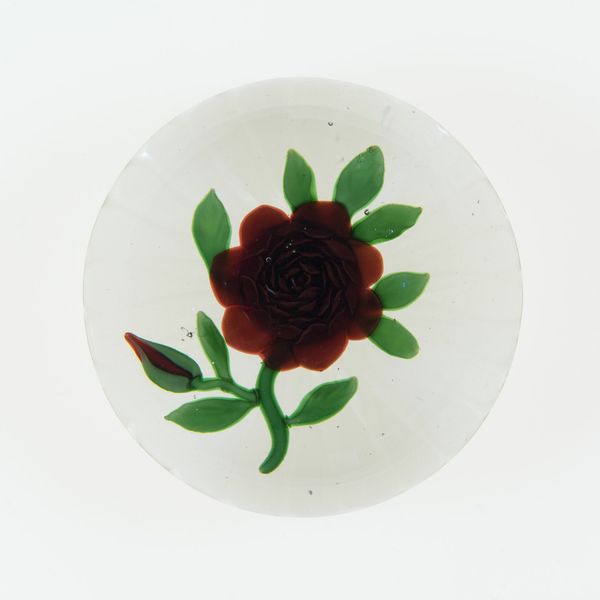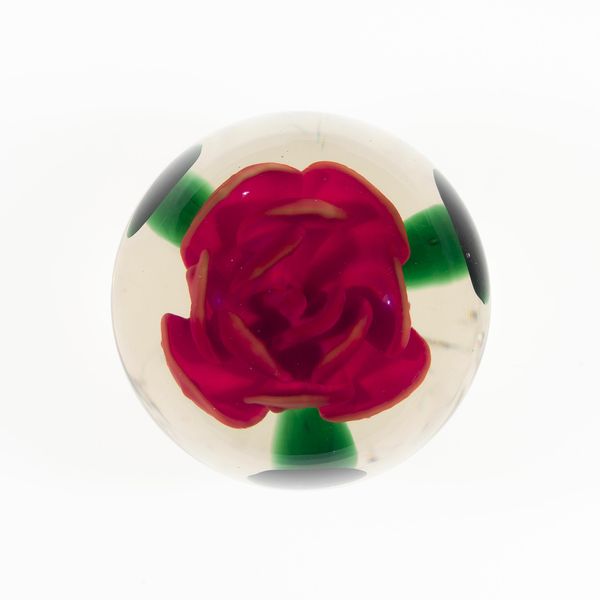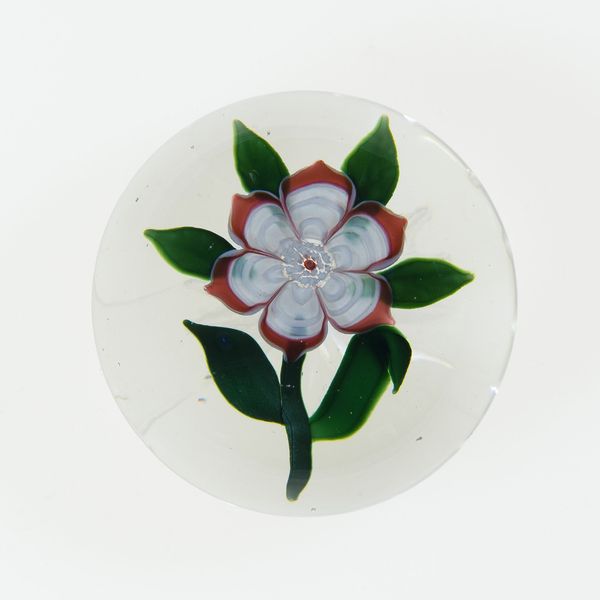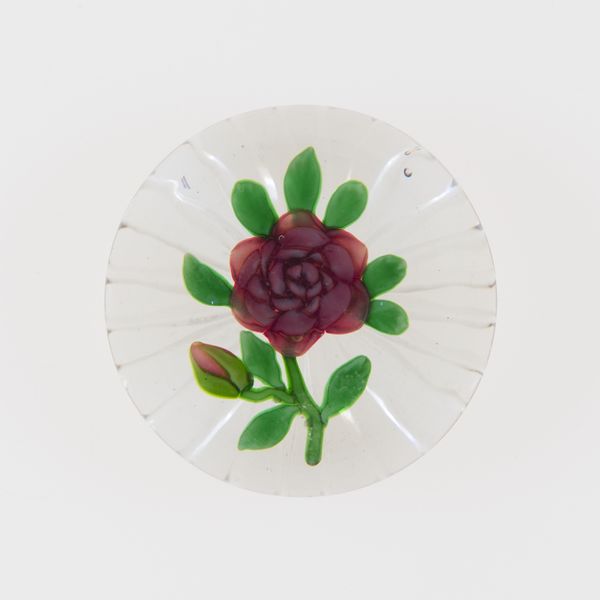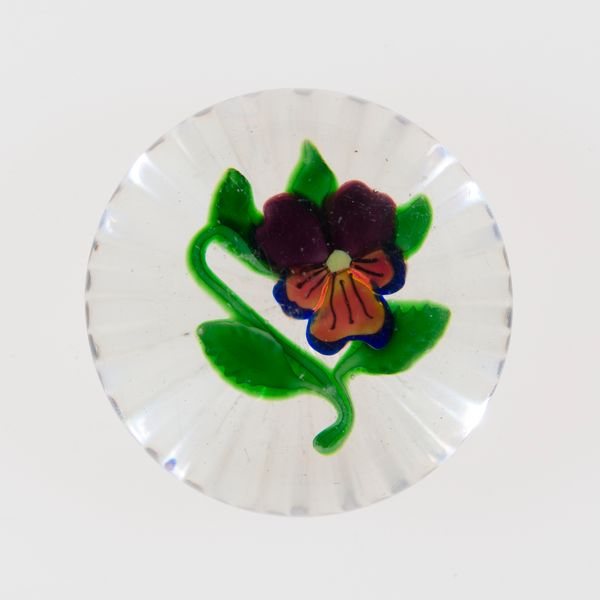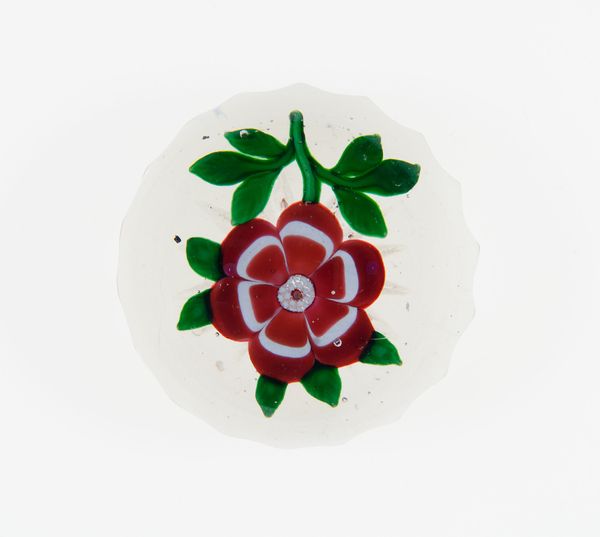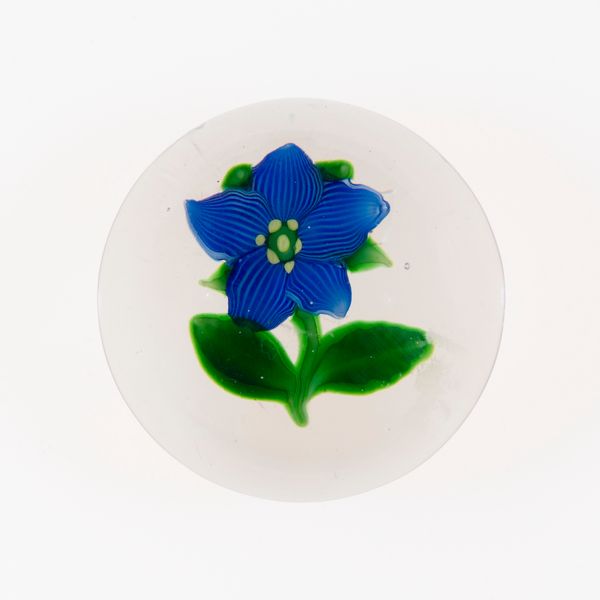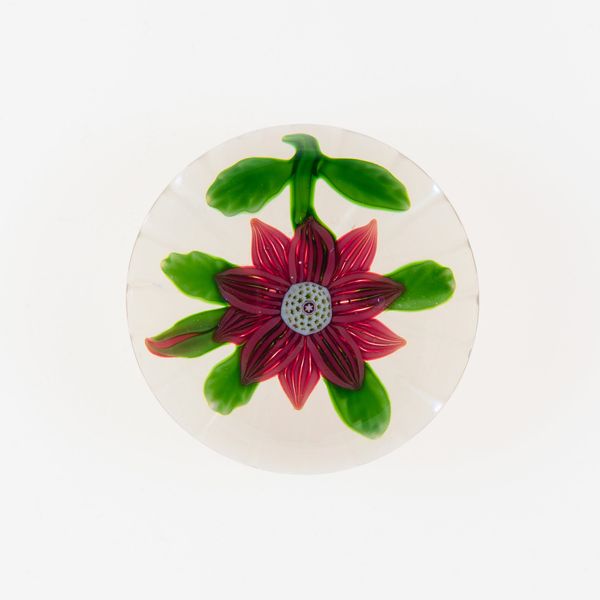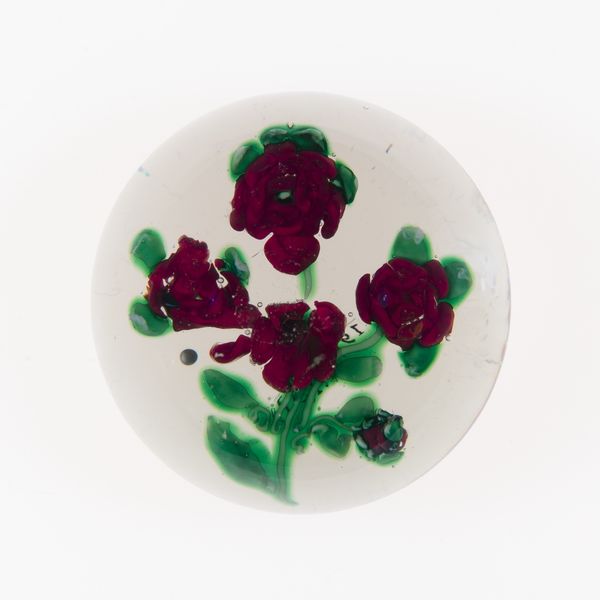
paper, glass
#
flower
#
paper
#
glass
#
decorative-art
Dimensions: Diam. 6.8 cm (2 3/4 in.)
Copyright: Public Domain
Curator: How charming, it’s like looking into a bottled secret! Editor: Absolutely. This piece, entitled "Paperweight," was crafted by Baccarat Glassworks, around the 19th century. It’s a simple, yet stunning example of decorative art using glass. Curator: The depth is captivating. That ruby rose, suspended as if caught in amber, and the emerald leaves… they almost tremble within the sphere. Is it just me, or is there a touch of melancholy there? Like a fleeting summer memory held captive. Editor: Well, it's interesting you mention "captive," as such items were hugely popular during the Industrial Revolution. As cheap, machine-made paper became widely available, the bourgeoisie were suddenly desperate for ornate tools to manage this excess paper. These paperweights became symbols of their place in the modern world, literally weighed down by its demands. Curator: Fascinating. It's always about commerce, isn't it? But I see the flower blooming, preserved perfectly under glass, it is also a statement about the enduring appeal of beauty. Almost like… a miniature rebellion against industrial coldness! Editor: Perhaps, but you could also interpret it as a bourgeois attempt at controlling even natural beauty, bending it to the form of kitsch. Mass-produced nature for a society that was increasingly alienated from it. Curator: I still lean toward a sort of stubborn optimism. The flower persists, it seems immutable under all that glass. What do you think an artist would feel seeing their delicate work encased in glass like this? Editor: I believe that as Baccarat was not primarily interested in aesthetic refinement but was simply producing glass trinkets, any notion of high art was very low on their list. Curator: Yes, point taken. A somewhat pragmatic piece made beautiful simply due to happenstance and a deep understanding of glass artistry, or perhaps my wistful projections got the better of me. Editor: Both, I suppose. Even objects made by a factory can trigger intense meaning and aesthetic emotions, that's what's so amazing about public engagement with art.
Comments
No comments
Be the first to comment and join the conversation on the ultimate creative platform.
